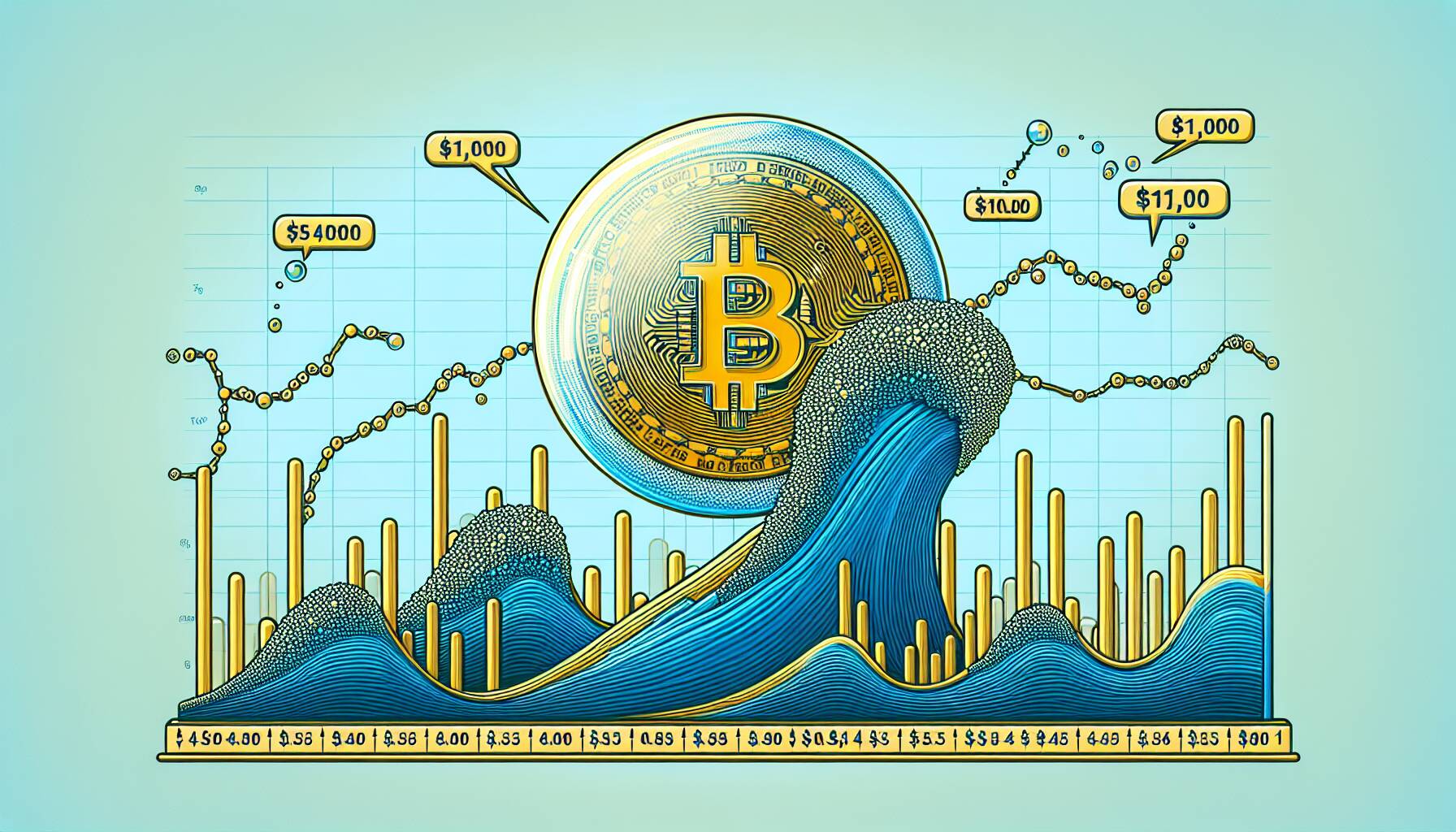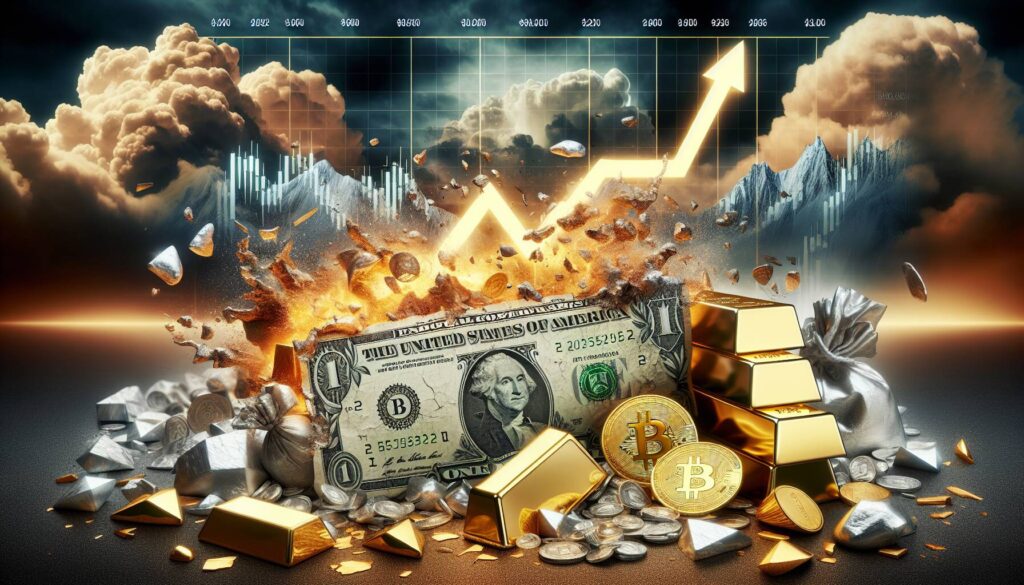In the ever-evolving landscape of cryptocurrency, Peter Thiel’s thoughts on market dynamics are once again capturing attention. The tech entrepreneur and investor’s “Bubble Theory” has emerged as a focal point just as Bitcoin approaches the significant milestone of ,000. The timing couldn’t be more intriguing as both enthusiasts and skeptics alike ponder the implications of such a price surge.
Thiel, known for his insights into tech trends and economic behavior, posits that assets can often inflate rapidly, leading to speculative bubbles. As Bitcoin’s price hovers near this landmark figure, many are reflecting on Thiel’s assertion that defining these bubbles is “extremely hard.” For investors, the discussion surrounding Bitcoin’s longevity and intrinsic value becomes increasingly relevant, especially as prices continue their dramatic fluctuations.
“Market sentiment plays a critical role in determining how people view assets like Bitcoin, particularly during periods of rapid price increase,” says a financial analyst familiar with cryptocurrency trends.
The notion of a bubble is not new to the cryptocurrency world. Just several years ago, Bitcoin experienced a meteoric rise that was followed by a significant correction. As the digital currency landscape continues to mature, Thiel’s perspective raises questions about the sustainability of such high valuations and what they mean for the future of investments in this sector.
As the market evolves, discussions about narratives like Thiel’s Bubble Theory are crucial for both seasoned investors and new entrants to the crypto space who are trying to navigate these turbulent waters. The scrutiny of Bitcoin’s movements and the discussions they ignite reflect a broader interest in understanding the risks and realities of cryptocurrencies amidst a backdrop of financial innovation.

Peter Thiel’s Bubble Theory Gains Relevance As Bitcoin Hovers Around K
In light of the recent surge in Bitcoin prices, key insights from Peter Thiel’s bubble theory are gaining significance. Here are some important points to consider:
- Bitcoin’s Recent Performance:
- Bitcoin’s price is currently around ,000, raising questions about its sustainability.
- The rapid increase in value may trigger discussions about market bubbles.
- Peter Thiel’s Bubble Theory:
- Thiel suggests that bubbles often arise from speculation rather than fundamental value.
- Understanding this theory helps readers assess their own investments.
- Market Sentiment:
- The current euphoria surrounding Bitcoin may indicate increased speculative behavior.
- A heightened focus on short-term gains can lead to poor investment decisions.
- Investment Implications:
- Investors should consider the risks of entering a potentially overheated market.
- Thiel’s theory may prompt readers to critically evaluate their portfolios and risk tolerance.
- Broader Economic Impact:
- Significant fluctuations in cryptocurrency can affect overall market stability.
- Thiel’s insights may encourage discussions on regulatory measures for digital currencies.
As Bitcoin continues its ascent, understanding the implications of bubble theories can be vital for making informed financial decisions.
Peter Thiel’s Bubble Theory Gains Relevance Amid Bitcoin’s Surge to K
As Bitcoin inches closer to the ,000 mark, it has sparked renewed interest in Peter Thiel’s long-debated Bubble Theory. This theory suggests that the value of assets like cryptocurrencies can inflate dramatically, often outpacing their inherent utility. In a financial landscape increasingly dominated by digital currencies, Thiel’s theory is gaining traction and stirring conversations among investors and analysts alike.
One significant advantage of Thiel’s theory is its ability to provide a framework for understanding the extreme volatility often seen in crypto markets. Unlike traditional investments that are grounded in tangible assets and earnings, cryptocurrencies can exhibit wild price swings driven by speculation and market sentiment. This perspective can be incredibly beneficial for investors looking to navigate the complex cryptocurrency terrain, as it encourages a careful examination of market fundamentals versus hype.
However, the theory isn’t without its drawbacks. Critics argue that labeling Bitcoin and similar assets as mere bubbles undermines their potential for long-term value creation and innovation. In the face of institutional adoption and advancements in blockchain technology, such views could create skepticism among potential investors who might otherwise be drawn to the prospects of digital assets.
For seasoned crypto enthusiasts and investors, Thiel’s insights can either reinforce their strategies or challenge their beliefs. Those who favor a cautious approach might find his warnings resonate, leading them to reassess their portfolios. On the flip side, aggressive traders could see this as an opportunity to capitalize on short-term price movements, moving away from fundamentals in favor of speculative gains.
The broader financial community, including traditional investors, startup founders, and institutional stakeholders, may also feel the ripples of this ongoing debate. While established firms might use Thiel’s theory to justify a more conservative stance on crypto investments, emerging companies aiming to disrupt traditional finance could leverage the surging interest in Bitcoin to draw attention to their innovations, potentially creating friction in the market.
Ultimately, as Bitcoin’s price teeters at an all-time high, understanding the implications of Thiel’s Bubble Theory will be crucial for anyone looking to navigate this volatile yet enticing landscape. Whether you are a die-hard believer in cryptocurrencies or a cautious skeptic, the ongoing developments in this space promise to influence investment behaviors for years to come.

















